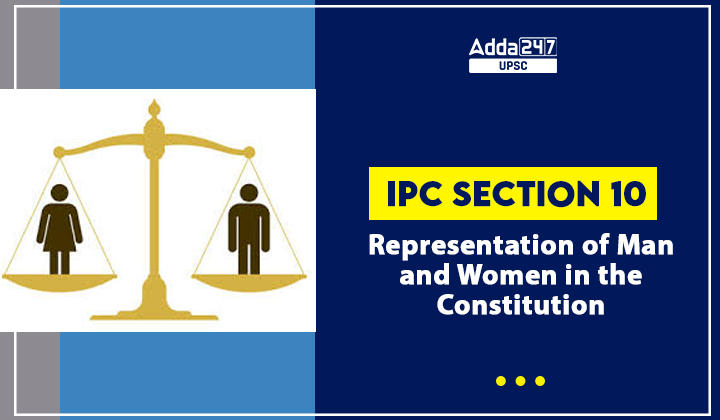Table of Contents
IPC Section 10
In simple terms, IPC Section 10 clarifies that when the Indian Penal Code uses the words ‘man’ or ‘woman’ in its various sections, ‘man’ means all male human beings, and ‘woman’ means all female human beings.
- “Man” – All male human beings
- “Woman” – All female human beings
- Age – The age of both the partners doesn’t matter
What is IPSC Section 10?
- IPSC Section 10 is a section of the Indian Penal Code (IPC) that defines the terms “man” and “woman”. It states that the word “man” denotes a male human being of any age; the word “woman” denotes a female human being of any age.
- This section is important because it is used in many other sections of the IPC to define the sex of the person who is committing or being subjected to an offense. For example, Section 375 of the IPC defines rape as “the carnal intercourse of a man with a woman against her will”. This section would not be able to define rape without the definition of “man” and “woman” provided in Section 10.
- IPSC Section 10 is also important because it can be used to challenge the gender identity of a person. For example, if a person who identifies as a woman is accused of a crime that is only committed by men, they could argue that they are not a man and therefore cannot be guilty of the crime.
- The interpretation of IPSC Section 10 has been the subject of some debate. Some people argue that the section should be interpreted literally so that the word “man” only refers to biological males and the word “woman” only refers to biological females. Others argue that the section should be interpreted more broadly so that it can also include transgender and non-binary people.
- The Supreme Court of India has not yet ruled on the interpretation of IPSC Section 10. However, in a 2014 case, the court held that the term “woman” in the Protection of Women from Domestic Violence Act should be interpreted to include transgender women. This suggests that the court may be willing to interpret IPSC Section 10 in a way that is inclusive of transgender and non-binary people.
Representation of Man in the Constitution
- IPC (Indian Penal Code) Section 10 does not directly address the representation of man or any specific gender-related provisions in the Constitution. Section 10 of the IPC pertains to the determination of the place of an offense when it occurs partly in one place and partly in another.
- It specifies the legal principles for determining the jurisdiction of courts in such cases. However, the Constitution of India does have provisions that uphold the principles of equality and non-discrimination, ensuring that both men and women are treated fairly and without bias in matters related to the law.
- These constitutional provisions, such as Article 15, emphasize gender equality and prohibit discrimination based on gender. While Section 10 of the IPC deals with jurisdictional matters, the Constitution sets the broader framework for upholding the rights and representation of all individuals, irrespective of their gender, within the legal system.
Representation of Women in the Constitution
- IPC Section 10 focuses on determining the location of a crime in cases that span multiple places.
- IPC Section 10 does not directly address the representation of women in the Constitution.
- The Indian Constitution, in various articles, emphasizes gender equality and prohibits discrimination against women.
- Articles like Article 15 of the Indian Constitution specifically prohibit discrimination based on sex.
- These constitutional provisions promote the fair treatment and representation of women in society and the legal system.
- While IPC Section 10 deals with legal jurisdiction, the Constitution’s provisions ensure that women’s rights and equality are upheld.
| Relatable Articles | |
| Section 10 of Income Tax Act | Centre State Relations |
| Special Provisions Act | Cooperative Societies |
| Section 2 | Indian Penal Code |




 TSPSC Group 1 Question Paper 2024, Downl...
TSPSC Group 1 Question Paper 2024, Downl...
 TSPSC Group 1 Answer key 2024 Out, Downl...
TSPSC Group 1 Answer key 2024 Out, Downl...
 UPSC Prelims 2024 Question Paper, Downlo...
UPSC Prelims 2024 Question Paper, Downlo...
